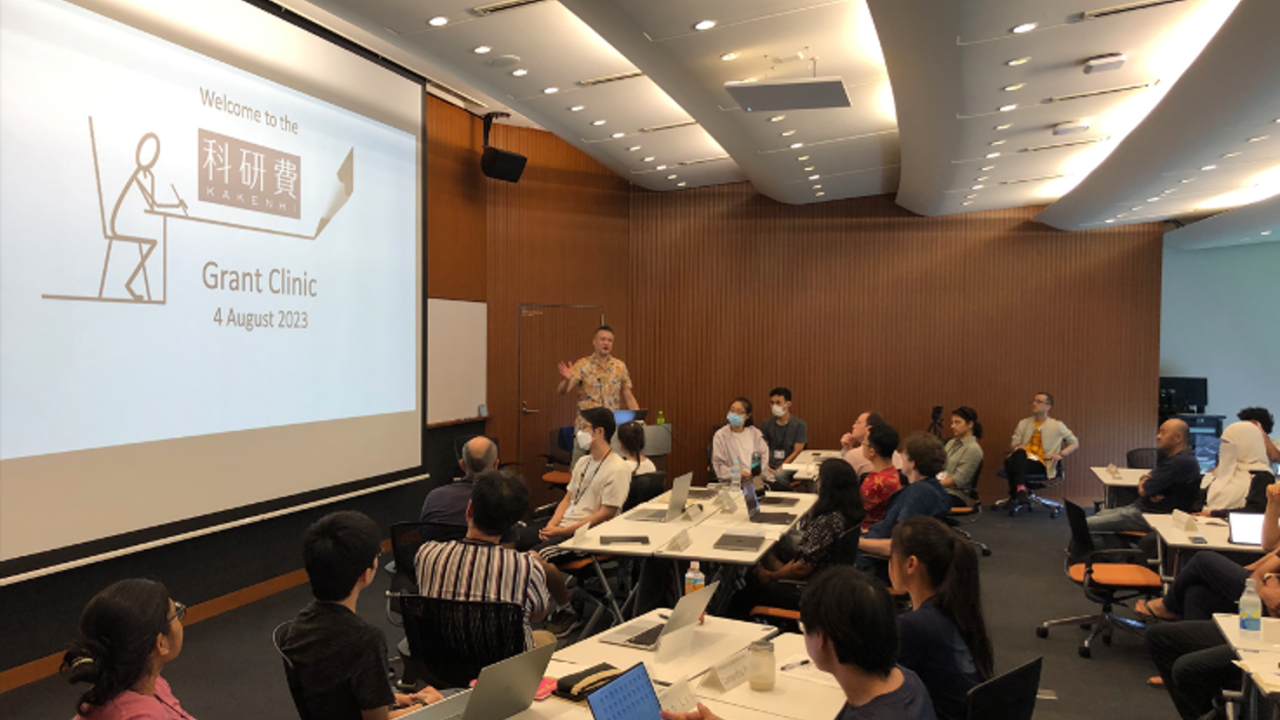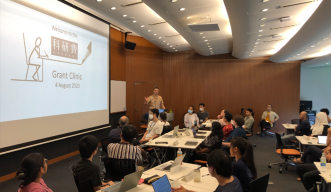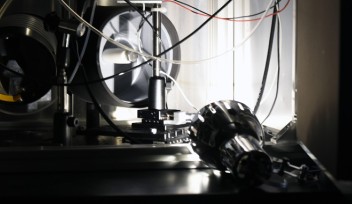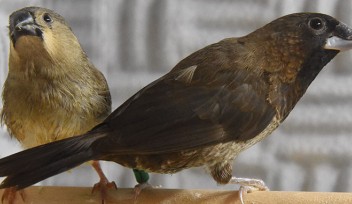New research projects launched at OIST!

In science, every discovery can open a new door to taking research a step further and gaining an even better understanding of the world around us. Here, we introduce two research projects that are about to take off after recently receiving funding from the “KAKENHI” grant. This funding is awarded under the Japan Society for the Promotion of Science (JSPS) and the Ministry of Education, Culture, Sports, Science and Technology (MEXT) patronage.
Every year, many researchers from all over Japan apply with their scientific projects for this grant, and scientists at OIST are no exception in their efforts to secure this funding. For the fiscal year 2024, our university experienced an unprecedented number of selected projects from our researchers – some of which we will introduce here.
Exploring how neurons talk to each other
Professor Izumi Fukunaga and her team in the Sensory and Behavioural Neuroscience Unit work on understanding how the brain makes sense of incoming sensory information, specifically smell. If an animal picks up a scent, the molecules from the air bind to specific receptors on neurons embedded in the epithelium of the nose. The specialized neurons transmit the information to the respective brain area from there. “We want to understand how these neurons talk to each other,” explains Prof. Fukunaga.
A peculiarity about a mammal's brain processing smell comes from how they pick up this information from the environment. The presence of scent molecules in the nose is linked to the intake of breath, giving the sense of smell a rhythm even at the molecular level. Mice often use active sniffing to explore their olfactory environment, creating a distinct breath rhythm, reflected in the neurons’ activity. “This is one of the interesting things about olfaction; the animal's rhythmic breath creates a temporal pattern in how the information arrives in the brain,” says Prof. Fukunaga. The brain organizes its activity when processing smell by synchronizing the electrical signals between neurons to these rhythms.
First, sensory information is transmitted from the nose to the brain via two specialized neuron types called mitral and tufted cells. Because those neurons end up in different brain areas, Prof. Fukunaga believes they might be taking advantage of this temporal structure to further coordinate their activities. "We think that one cell type might shift their activities regarding the animals' sniff cycle while the other type does not, creating a functional distinction based on this temporal information,” explains Prof. Fukunaga.
With PhD student Xiaochen Fu and postdoctoral researcher Dr. Janine Reinert, Prof. Fukunaga will use this KAKENHI grant to study if there are such cell-type dependencies and the functional importance of temporal rhythms in neuronal signaling. “I am very excited about this project; I have wanted to do this research since I came to OIST!” says Prof. Fukunaga.
Boosting sustainability
Professor Christine Luscombe and her team in the pi-Conjugated Polymers Unit specialize in research on organic molecules suitable for building semiconductors. “The terminology can be confusing; the term organic might make you think of vegetable farming,” Prof. Luscombe remarks before explaining that in chemistry, molecules are grouped into two categories, organic and inorganic, according to their different properties.

“Using organic polymers has the advantage that we can make flexible devices; they have the potential even to be integrated into the human body,” says Prof. Luscombe. This compatibility with our anatomy would allow the semiconductors to be used in diagnostic devices. “If we keep in mind that one day these materials might have to be produced on a large scale for industrial applications, it is important to think of environmental sustainability in the process,” Prof. Luscombe continues. This secondary mission of her lab sparked the idea for the grant proposal.
“When setting up our lab in Okinawa, we stumbled upon a new reaction to synthesize a polymer much faster than before,” says Prof. Luscombe. This novel method reduced the production time from one hour to only ten minutes, saving a lot of energy and making prototype manufacturing easier. “But the thing is, we don't know why it is so much faster; this is what we will try to find out using this grant,” she says. Understanding this process is important to replicate the method when producing other materials. It might even make it possible to implement this process for industrial purposes.
Dr. Fathy Hassan, an interdisciplinary postdoctoral fellow in Prof. Luscombe’s unit and Prof. Sile Nic Chormaic’s Light-Matter Interactions for Quantum Technologies Unit, is also working on finding more environmentally friendly solutions for existing problems. “Dr. Hassan’s research focuses on the potential uses of cellulose. You find it in plants, and it has the major advantage of being easily biodegradable,” Prof. Luscombe explains. He will expand his work on cellulose nanocrystals using his recently awarded Early-Career Grant. “He is working on applications for these materials, for example in light reflectors. These are currently made of quite toxic materials; replacing those materials with cellulose would be better for the environment,” says Prof. Luscombe.
Another of the lab’s postdoctoral researchers awarded an Early-Career KAKENHI grant is Dr. Samantha Phan, who studies microplastics. “Dr. Phan works on identifying which types of plastic are making up the microplastics that we find in marine organisms,” Prof. Luscombe explains. An incredibly tedious and time-consuming work, where the animal tissue first has to be digested before filtering out any non-dissolvable particles.
Each of those particles is then individually inspected under the microscope to differentiate if they are plastic or another material before further analysis is possible. “With this KAKENHI grant, Dr. Phan will develop a machine learning tool to automate the plastic identification, which so far has to be done by hand,” Prof. Luscombe says.
Applying for such KAKENHI grants can come with additional difficulties for international researchers. Beyond the hurdle of the language barrier, the applicants first need to become more familiar with the used format, and the project descriptions are more concise than what some scientists are used to. At OIST, the Grant and Research Collaboration Section supports researchers in overcoming these obstacles. “We created manuals with tips on how to write a successful application and conduct workshops where current candidates get feedback on their grant proposals from past awardees,” says Yoshiteru Fujimatsu from the Grant and Research Collaborations Section.

“We are pleased about the researcher's success this past year, but we are also eager to increase the number of external funding sources more and to diversify our research resources further,” emphasizes Fujimatsu. And Prof. Luscombe adds that being selected for a grant like KAKENHI brings opportunities beyond financing, “this will help us to connect even better with the academic community here in Japan,” she says.
Specialties
For press enquiries:
Press Inquiry Form
















